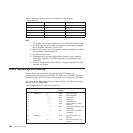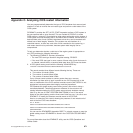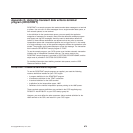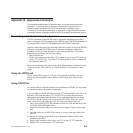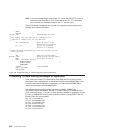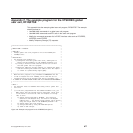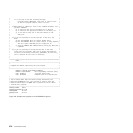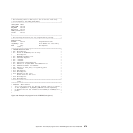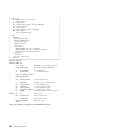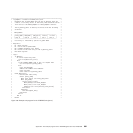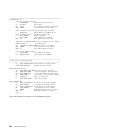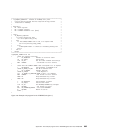
Note: If you are already using a customized TCT rather than DFHTCTDY (that is,
something other than 'NO' or 'DY' is specified on the SIT TCT parameter),
you must add your translation code to the TCT you are using.
Figure 133 shows a suggested way to code the assembler source statements to
translate your national characters.
Translating TS data sharing messages to uppercase
CICS temporary storage (TS) data sharing uses AXM services to write operator
messages. These messages are in mixed-case English; table AXMMSTAB is used
to remove unprintable characters. If necessary, you can modify AXMMSTAB to
convert the messages to uppercase English.
The modules that use AXM message services are AXMSI, AXMSC, and
DFHXQMN. AXMSI and AXMSC are both in a linklist library; DFHXQMN is in the
CICS authorized library. To convert TS data sharing messages to uppercase, modify
the copy of AXMMSTAB used by each of these modules by using SPZAP with the
following input (for each module):
NAME modulename AXMMSTAB
VER 0081 818283848586878889
VER 0091 919293949596979899
VER 00A2 A2A3A4A5A6A7A8A9
REP 0081 C1C2C3C4C5C6C7C8C9
REP 0091 D1D2D3D4D5D6D7D8D9
REP 00A2 E2E3E4E5E6E7E8E9
MACRO
NATLANG
DFHUCTRT CSECT Resume UCTRAN table CSECT
.*
.* This example translates lowercase ’a’ ( EBCDIC X’81’) to
.* uppercase ’A’ (EBCDIC X’C1’) for a US code page.
.*
ORG TCZUCTAB+X’81’ Reset the counter to the
character to be translated.
DC X’C1’ Declare the replacement
character as a constant.
.*
.* Repeat the above two statements for each extra character you wish
.* to be translated.
.*
ORG , Reset the location counter
&SYSLOC LOCTR Resume previous location counter
MEND End of macro definition
DFHTCT TYPE=INITIAL,SUFFIX=xx, *
MIGRATE=COMPLETE, *
ACCMETH=(VTAM), *
DUMMY=DUMMY
NATLANG Execute NATLANG
DFHTCT TYPE=FINAL
END DFHTCTBA
Figure 133. Suggested coding for national language character translation
876 Customization Guide



